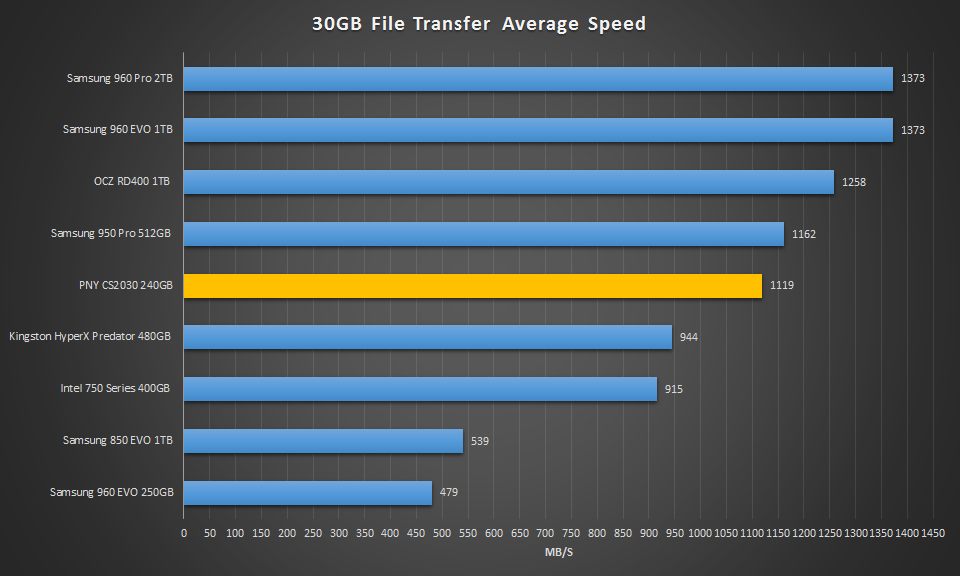REAL WORLD FILE TRANSFER
We also wanted to see how performance was in a real-world use when transferring large files to the SSD. For this test, we are going to simply stress write performance by transferring over a 30GB folder of movies off of a 512GB Samsung 950 Pro to the test SSDs and time how long it takes. Once complete we can calculate the average speed.
Here the PNY CS2030 plots right in the middle of our comparison drives. It beats out the Intel 750 400GB, Kingston HyperX Predator 480GB, and absolutely crushes the Samsung 960 EVO 250GB. With a result of just over 1.1GB/s, it is nipping at the toes of the Samsung 950 Pro. Let’s see how well power consumption is regulated next.
POWER CONSUMPTION
For our power consumption testing, we have the drive connected to the system as a secondary drive. To record the wattage, we are now utilizing a Quarch Technology Programmable Power Module. It allows us to accurately measure power consumption over time and is flexible enough to allow us to test any SSD that comes our way.
Our power analysis may change as time goes on, but for now we are looking at just a few metrics with the main goal of measuring our results against the manufacturer’s ratings. Because most consumer systems are at idle for about 80% of the time, idle power consumption is an important measure to look at when understanding the efficiency of a drive.
During idle, the PNY CS2030 consumes 1.1W, which is actually less power than any of the other drives in our chart. Still, this result is much higher than that of a SATA powered SSD.
POWER EFFICIENCY
Finally, we wanted to post up a graph of the power efficiency of the SSDs in comparison. We are looking at MB/s per Watt in this graph. The higher the result, the better.
During our write test, it delivered 305MB/s per Watt of energy used. Overall, this result is very good, especially considering the NAND is not 3D.
 The SSD Review The Worlds Dedicated SSD Education and Review Resource |
The SSD Review The Worlds Dedicated SSD Education and Review Resource | 


4K QD1 read IOPS tells me most likely not Micron flash.
Probably WD/Toshiba slight chance even Hynix.
Googling the NAND print reveals other SSD reviews that identify this as a Toshiba 64GB 15nm MLC package.
As long, as it is double sided, it’s no deal for many slim ultrabooks.
Can you give us a specific of that?
I wonder how it would behave with some cooling. Maybe problem with heavy loads lies in overheating ? Maybe this ‘m2 shield’ stuff could help. If so then with minimal added cost its perfect.